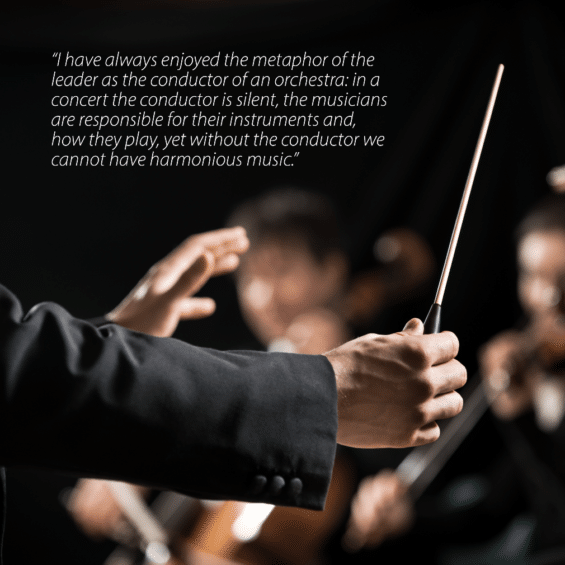Descriptions of resilience centre on the process of bouncing back from adversity, and bouncing back with intention, learning, and harnessing that adversity as an opportunity for growth. Southwick & Charney, 2018, identified ten resilience factors of resilient people, the last being the self-awareness and the taking of responsibility for growth from adversity. This suggests the importance of an adaptive response: whilst genetics and epigenetics do impact resilience (Southwick & Charney, 2018) meaning that some people may be naturally more resilient than others, resilience is discoverable, learnable, and hence coachable.
Given that most people will face some form of trauma in their lifetimes (Southwick & Charney, 2018), research on resilience is often centred on resilient individuals. This is also true for leadership: resilience would be a trait I suspect most would desire in their leaders. Let us look at it another way: organisations are made up of leaders and teams, so what is the role of leadership in building resilient teams in order to fulfill the organisations’ mission, vision, values, and purpose? And furthermore, what is the value of resilience in the building of high performing teams, surely at the forefront of the minds of all leaders?
I approached Dr. Etienne van Der Walt, Neurologist, Thought Leader, CEO of Neurozone, specialising in the Neurotechnology of resilience and high performance, to delve into the neuroscience behind this:
Science Nuggets for leaders
“In the face of rapid change ‘business to the brain’ remains the same”
It goes a bit like this: “We use our knowledge, skills, expertise and experience to allocate resources together and to distribute it fairly in order to stay alive, survive and thrive in life”.
Arguably this constant is driven by our most stable DNA. Yet the world around us changes constantly…
In fact, living in this volatile, uncertain, complex, ambiguous world that changes at the always accelerating ‘speed of technology’, requires rapid and scaled human adaptions. To satisfy our brains in the future of work that we are doing well, will continuously require increased capacity for adaptation. The challenge will soon exceed and overcome the capacity of our individual resilience, resulting in chronic stress and burnout.
Fortunately, we naturally group together to work together. We form an innovative collective where the outcomes of our efforts can be bigger and better than the ‘sum of the individual parts’. We believe that the degree to which present and future leaders understand and ensure group efficiency will determine our resilience and capability to overcome the escalating future challenges. From our neuroscientific research, we have crystallised a few very important nuggets that leaders should optimise:
Nugget one: Understand social safety to ensure group high performance readiness
Individuals have an intrinsic need for social safety. Small groups and larger aggregates are not the same. Small numbers (probably 8 or less) keep us alive through entrustment, also known as ‘bonding’. At its core, bonding drives social safety in small teams. In larger teams and the organisation as a whole, bonding is only possible in ‘huddles’, so we rely very strongly on belonging. Belonging and bonding are not the same, in fact they activate different pathways in the brain. They are both essential to build our collective resilience. To now leverage the collective value of a socially safe group, we need diversity of perspectives and safety to voice them freely. Affective empathy (feeling in another’s shoes) and cognitive empathy (thinking in another’s shoes) act as the glue for resilient, collective innovation.
Nugget two: Optimise the energy of living teams and organisations
Every individual, team and organisation produce a finite amount of biological energy. It is because energy is not infinite that leadership of the self and of the group are so profoundly important. Great self-leadership and collective leadership, ensure that our finite energy is optimised. This builds collective resilience greatly and will ensure that we stay on the exponential curve of technological change without ‘falling off’. Energy optimisers include: a sense of purpose, optimism, gratitude, enthusiasm, and humour.
Nugget three : Appropriate resource allocation
Not sweating the less important stuff’ for starters requires buying into a collective vision. Today more than ever, visionary leadership, requires a resilient mindset, a mindset that values collaborative competitiveness and empathy as highly sought-after traits. Visionary leaders who harness the collective also embrace and embody mindfulness training, enabling their unconscious brains to ‘cut through the clutter’ and to ‘sense more cues’ that will optimise the group’s yield/energy ratio.
Nugget four : Observe the rhythms of the brain/body system
The important ‘traditional wellbeing drivers’ remain essential for collective resilience building. In fact, our data demonstrates that exercise, movement, nutrition, sleep/wake cycle, and daily mindfulness training remain critical predictors of resilience. Not surprisingly exercise duration and exercise diversity became the stable top predictors of resilience of leaders in our global database during Covid.
Nugget five : Cultivate learning innovation
You can only be as innovative as what you know. Most neuroscientists today agree with this thinking about learning and innovation. Leaders and their teams should frequently reflect on their subject matter and experiential learning, their mistakes and successes and ensure they learn from all of these to cultivate their collective resilience: ‘bouncing back’ with intention and learning.
Final Thoughts
Having resilient leaders and, the building of resilient teams made up of resilient individuals, appears clearly to be a competitive organisational advantage . Not simply to manage adversity, but to become a learning environment to adapt to and deal with uncertainty. There is an interplay of individual responsibility for adopting behaviours that promote resilience, for the good of self and team, and the collective responsibility to harness the high performance of a resilient team: the task of leaders.
I have always enjoyed the metaphor of the leader as the conductor of an orchestra: in a concert the conductor is silent, the musicians are responsible for their instruments and, how they play, yet without the conductor, we cannot have harmonious music. Neuroscience has so much to add in this field: resilience is the foundation of high-performance architecture, and high performance is a team game.
References
Southwick S.M. & Charney D.S, 2018, Resilience: The Science of Mastering Life’s Greatest Challenges, Cambridge University Press: Cambridge, UK.




